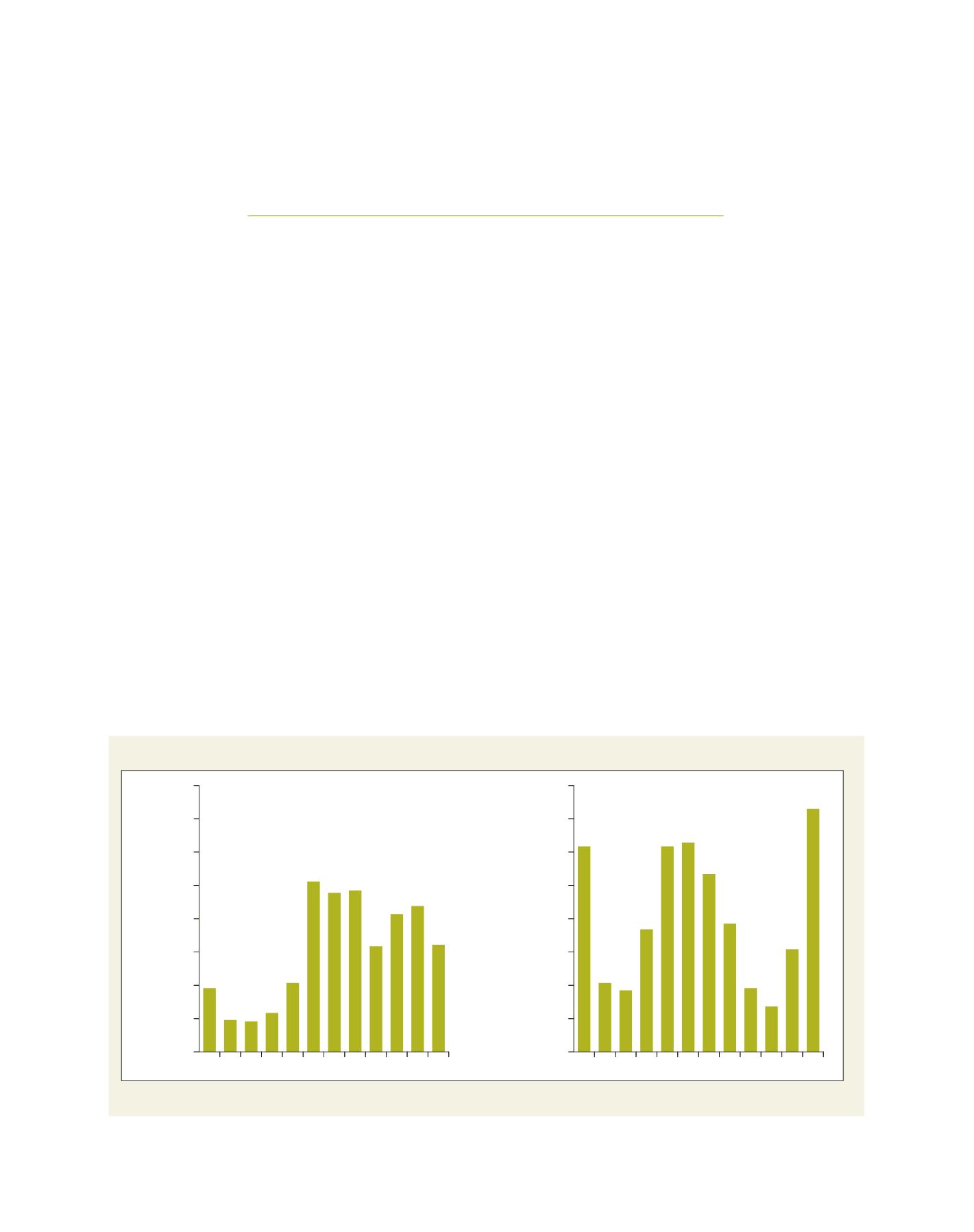

Rainfall (mm)
0.0
Jan
Feb
Mar
Apr
May
Jun
Jul
Aug
Sep
Oct
Nov
Dec
50.0
100.0
150.0
200.0
250.0
300.0
350.0
400.0
Rainfall (mm)
0.0
Jan
Feb
Mar
Apr
May
Jun
Jul
Aug
Sep
Oct
Nov
Dec
50.0
100.0
150.0
200.0
250.0
300.0
350.0
400.0
[
] 149
Strategic planning in the Caribbean:
the role of seasonal forecasts
Kim Whitehall, Margarette Mayers-Als and David A. Farrell, Caribbean Institute for Meteorology & Hydrology
T
he socioeconomic development of the Caribbean region
is strongly dependent on how its citizenry adapts to local
climate changes in both the short- and the long-term. As
a result, considerations of climatic factors are a critical compo-
nent in the region’s planning process. Depending on the sector
and the activity, the inclusion of climate into planning proc-
esses may be based on climate forecasting approaches that have
been developed from traditional knowledge to those steeped in
modern science. Regardless of the approach taken, the goal is
essentially the same: maximizing productivity to ensure the
survival of the community and the region.
The Caribbean consists of countries and states that are relatively
small in size – generally less than 500 square miles. Exceptions
include Jamaica, Trinidad and Tobago, Haiti, the Dominican
Republic and Cuba. Although Guyana and Belize are located in
South and Central America respectively, from a regional perspective
they are considered part of the Caribbean. Apart from being gener-
ally small, common features of many Caribbean islands and states
include: small economies, lack of economic diversity and high risk
exposure to climate hazards. In fact, the performance of many local
economies is strongly dependent on climate. Hence
adapting to climate is critical to the socioeconomic
development of the Caribbean region.
Climatic regions in the Caribbean include both semi-arid
areas and tropical rainforests. In addition, the region expe-
riences tropical cyclones annually. Caribbean climates are
complex and are regulated by weather systems that origi-
nate off the west coast of Africa before migrating westward
into the Caribbean. Systems moving northwest from the
South American continent and southeast from the North
American continent also influence the region’s weather and
climate. In addition to transporting moist or dry air into the
Caribbean region, weather systems entering the Caribbean
may also transport aerosols such as Sahara Dust and particu-
late matter from biomass burning.
Annual rainfall totals in the Caribbean region range from
less than 750 millimetres to greater than 2,500 millimetres
in some localities. Northern sectors of the Caribbean exhibit
a bimodal rainfall patternwith the primary rain season coin-
ciding with the North Atlantic hurricane season (from June
toNovember) and the less prominent rain season occurring
O
bserving
, P
redicting
and
P
rojecting
C
limate
C
onditions
Mean monthly precipitation for the period 1998 to 2008
Source: Caribbean Institute for Meteorology & Hydrology, St. James, Barbados
Mean monthly precipitation for the period 1998 to 2008, Piarco Airport, Trinidad (left); Georgetown, Guyana (right)
















